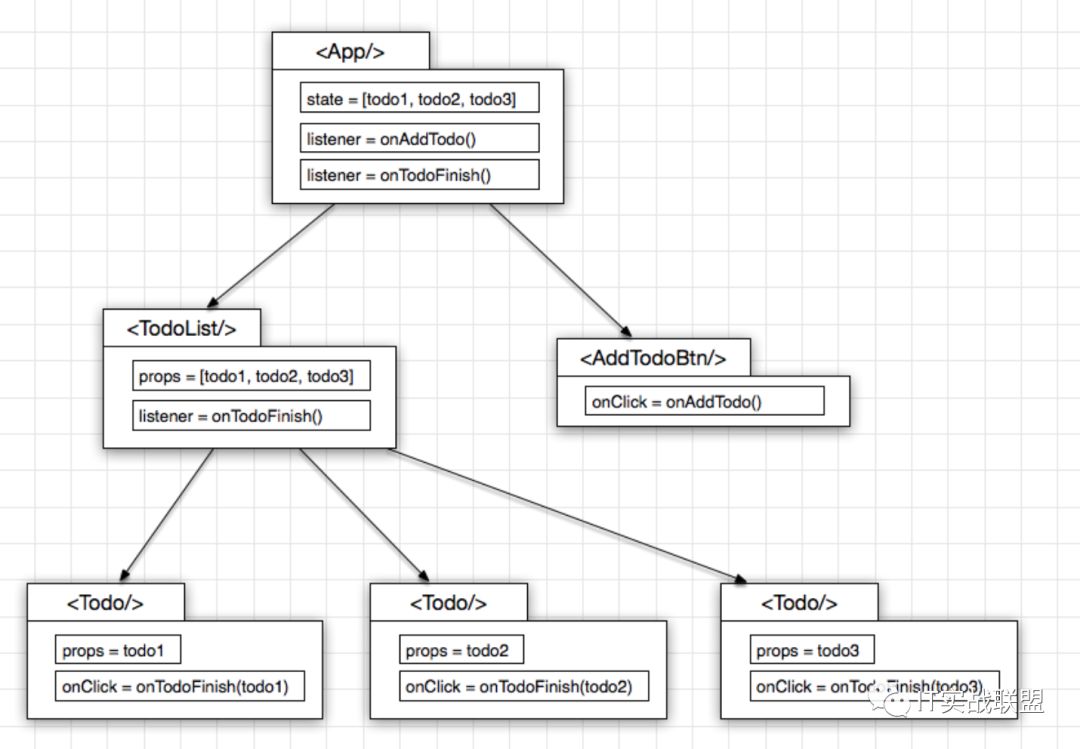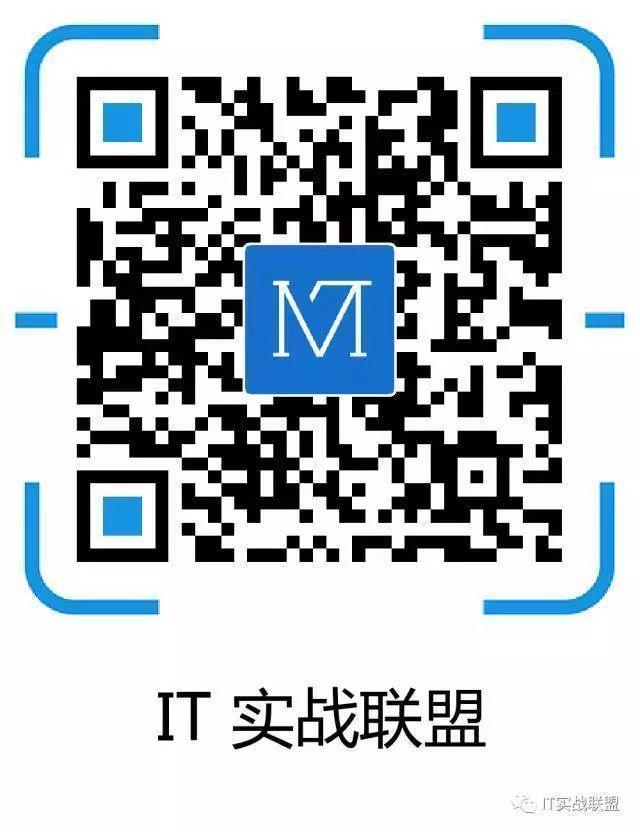由四张图引发的一系列事件。。。。
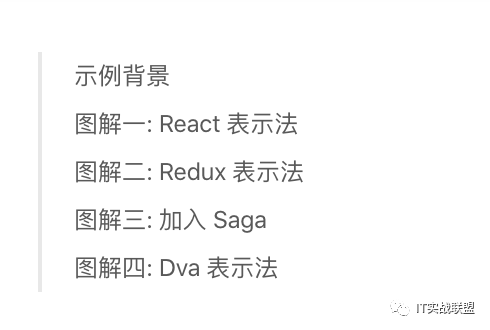
图片来源:https://www.yuque.com/flying.ni/the-tower/tvzasn
本文主要根据原生传参展开,顺带温故下生命周期,接下来就是Redux.
第一部分 生命周期
一、概念
在组件创建、加载运行、被销毁的过程中,总是伴随着各种各样的事件,组件在特定时期触发对应的事件,都属于组件的生命周期范畴。
生命周期的三种状态:
Mounting:已插入真实 DOM
Updating:正在被重新渲染
Unmounting:已移出真实 DOM
完整的生命周期如下图所示,可以在代码中,尝试一下,各个方法在什么时候会触发,触发效果是什么。
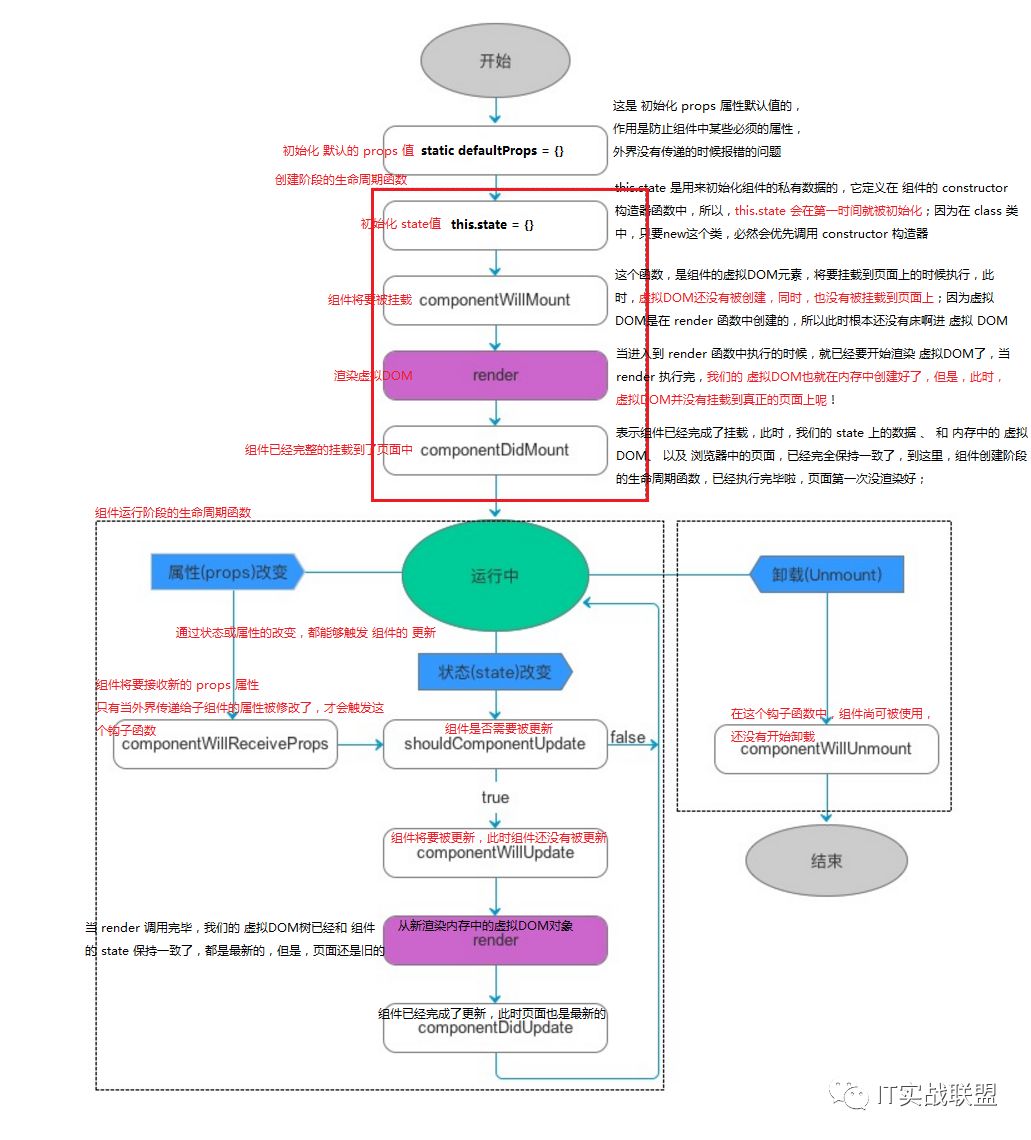
import React from "react";export default class Counter extends React.Component {constructor(props) {super(props);this.state = {count: this.props.count};}static defaultProps = {count: 0};increment = () => {this.setState({count: this.state.count + 1});};// 在组件即将挂载到页面上的时候执行,此时,组件尚未挂载到页面componentWillMount() {console.log("componentWillMount");}// 在内存中开始渲染DOM,未展示render() {// ⚠️在此如果更新state, 则会进入死循环return (<div><h1>这是 Counter 计数器组件</h1><input type="button" value="加1" onClick={this.increment} /><hr /><h3 id="content" ref="h3">当前的数量是:{this.state.count}</h3></div>);}// 判断组件是否需要更新shouldComponentUpdate(nextProps, nextState) {console.log(nextProps, nextState);return true;}// 组件将要更新,但Dom, state还是旧的componentWillUpdate() {console.log("WillUpdate: " +document.getElementById("content").innerHTML +". state: " +this.state.count);}// 组件完成了更新,此时,state 中的数据、虚拟DOM、页面上的DOM,都是最新的componentDidUpdate() {console.log("DidUpdate: " +document.getElementById("content").innerHTML +". state: " +this.state.count);}}
第二部分 原生通信
以下示例codesandbox地址:https://codesandbox.io/s/gifted-grothendieck-2wsy3
主要实现以下功能:
父子组件通过props互相传值;
孙子组件通过context传参数。
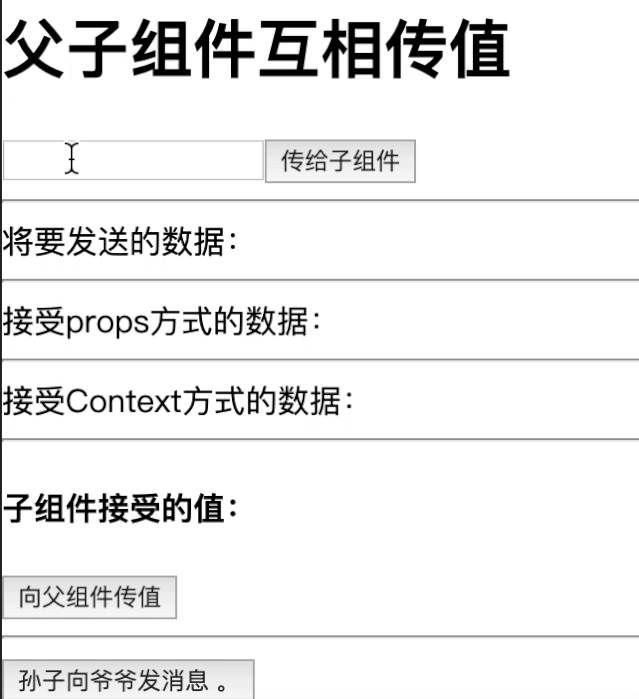
一、父子组件互相传值
import React from "react";import PropTypes from "prop-types";import Son from "./Son";export default class Father extends React.Component {constructor(props) {super(props);this.state = {content: "",inputMsg: "",receiveMsg: "",contextMsg: ""};}/** ------使用props传值----------- */// 更改状态inputMsg = item => {this.setState({inputMsg: item.target.value});};sendMsg = () => {const text = this.state.inputMsg;this.setState({content: text});};/*** 父组件将一个函数作为 props 传递给子组件,* 子组件调用该回调函数,便可以向父组件通信。*/handleCallBack = msg => {this.setState({receiveMsg: msg});};/** ------使用props传值----------- *//** ------使用context传值----------- */// 父组件声明自己支持 contextstatic childContextTypes = {callback: PropTypes.func};// 父组件提供一个函数,用来返回相应的 context 对象getChildContext() {return {callback: this.callback.bind(this)};}callback(msg) {this.setState({contextMsg: msg});}/** ------使用context传值----------- */render() {return (<div><h1>父子组件互相传值</h1><input value={this.state.inputMsg} onChange={this.inputMsg} /><button onClick={this.sendMsg}> 传给子组件 </button><hr /><label> 将要发送的数据:{this.state.inputMsg} </label><hr /><label> 接受props方式的数据:{this.state.receiveMsg} </label><hr /><label> 接受Context方式的数据:{this.state.contextMsg} </label><hr /><Soncontent={this.state.content}handleCallBack={this.handleCallBack.bind(this)}/></div>);}}
import React from "react";import GrandSon from "./GrandSon";export default class Son extends React.Component {// 回调父组件的handleCallBack方法,向上传值callBack = msg => {return () => {this.props.handleCallBack(msg);};};render() {return (<div>// 1. 接受父组件传过来的值<h4>子组件接受的值:{this.props.content}</h4>// 2. 向父组件传值<button onClick={this.callBack("发送:" + this.props.content)}>向父组件传值</button><hr /><GrandSon /></div>);}}
二、跨级组件
import React from "react";import PropTypes from "prop-types";export default class GrandSon extends React.Component {// 子组件声明自己需要使用 contextstatic contextTypes = {callback: PropTypes.func};// 回调函数cb = msg => {return () => {this.context.callback(msg);};};render() {return (<div><button onClick={this.cb("发消息")}> 孙子向爷爷发消息 。</button></div>);}}
总结
官方文档一看就会,一写就蒙圈。。
通过以上这两个示例,主要加深了对React的理解,将组件与数据串联起来,页面很丑,数据来凑,示例中没有数据校验与代码优化。
接下来对剩余的几张图【Redux、Dva】以示例的方式展示出来,应该快轮到antd了。
注意:本文归作者所有,未经作者允许,不得转载
